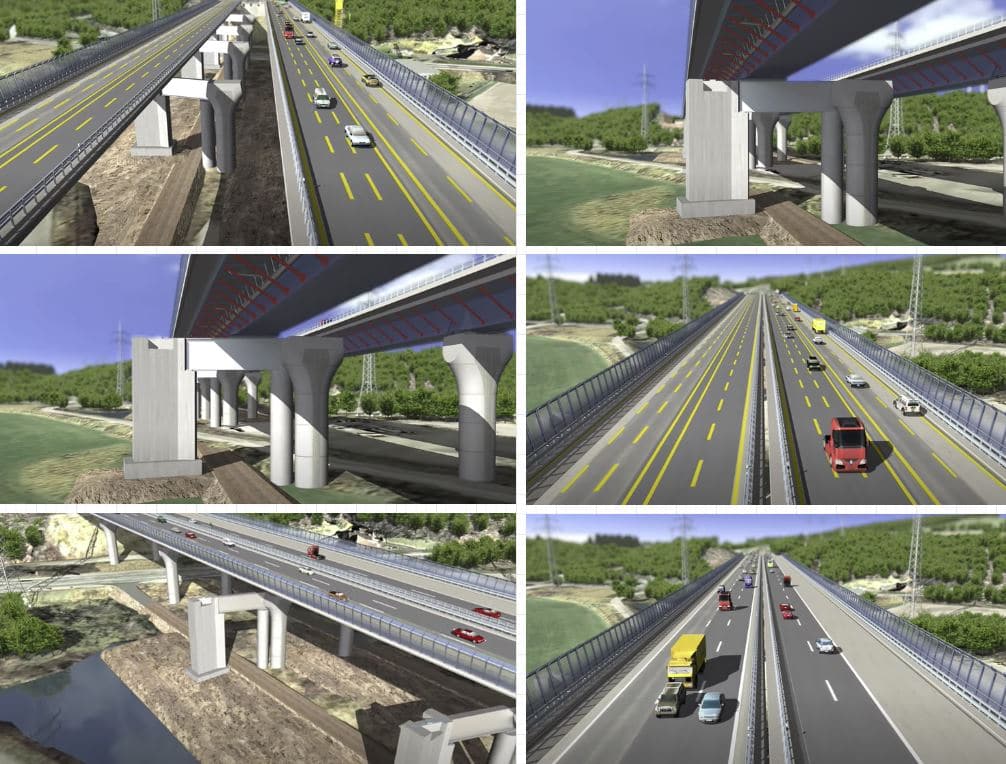-
Phone Number
-
Email Address
This could be an exam question in engineering civilian : We have a bridge 1 kilometer wide long on land on a highway that passes 90,000 Daily vehicles… How do we replace it without stopping the traffic, at the lowest possible cost and once completed, has to be in the same starting position?
Although data is missing for this “mini quiz” and, prior, you can imagine some coherent solution. Few guessed how the little riddle has been solved.
Engineering alone is already amazing! but when you combine it with civil engineering, things get bigger along the way. forceful.
In this story, enter the Lennetal Bridge from the A45 motorway located in Germany. 30 meters of high and almost a kilometer long , with thousands of cars and trucks that travel every day through its vials.

Since its inauguration in 1967, each year it has seen its road traffic until reaching the 90,000 Vehicles per day . with so much effort, it was no longer viable to continue maintaining it.
The need to replace the entire bridge has launched a historic milestone in European engineering. From the company Hochtief, have succeeded in displacing – in one piece – almost 1 km of three-lane highway with 30,000 Tons of weight, a little more than 19.50 meters .
We better see it in the video…
The operation performed by engineers to traveling that stretch took 6.5 hours . winches hydraulics with super steel cables moved the bridge until you get it in the right position, crazy!
Although you already have the solution to the “quiz” . Today, we want to learn more, and for all of us who are not unfamiliar with bridge replacement techniques, nor are we of roads or civil works engineers I find it surprising the work they do! We add a small diagram of how to carried out the replacement of the Lennetal bridge
Content menu:
Without stopping traffic. The engineers' first step was build a new four-lane road next to the old highway. This new construction will be – as we will see later – a transit direction of the future new highway.

As a small aside, remember that we already have the first robot who builds a bridge by himself, even if it looks like a toy, We can already see what the future will be like.
When we already have the new vial finished parallel to the old highway. We pass road traffic – both ways – to ride on the new road and have the old ones free lanes.

We continue without hindering traffic, although obviously we will have fewer lanes.
We have the old highway without traffic. we started the demolition of both directions – six lanes – at the same time that we started with the new foundation that will support the new highway.

In this particular case, the foundation is built independent and to bear; three lanes in one direction and three others, in the other. Remember our article on foundations in buildings with some very interesting.
About the new foundation we already have. we're just going to build three lanes with one direction. With the intention of take advantage of the new road that vehicles already circulate.

It's time to pass the road traffic on the first new highway built, to the latter that we have executed. Now the First, we already have it free of vehicles.
With the system of hydraulic winches we move the bridge of a kilometer in length to place it in the position original of the old highway.

And we already have everything in place! Although this may seem an operation that is performed in a short time. This project started in 2013, and at the beginning of this month, is when it has produced the movement of the bridge.
For those who are more curious. We leave you the following video that details with 3D modeling how everything has been the process carried out by engineers.
Civil engineering is passionate, but when we talk about techniques to build bridges increases exponentially! As a curiosity, the longest road traffic bridge in the world is the 55 km long Bang Na Expressway in Thailand. The construction of the huge bridge required more than 1,800,000 cubic meters of concrete.
If you liked the article, rate it and share!